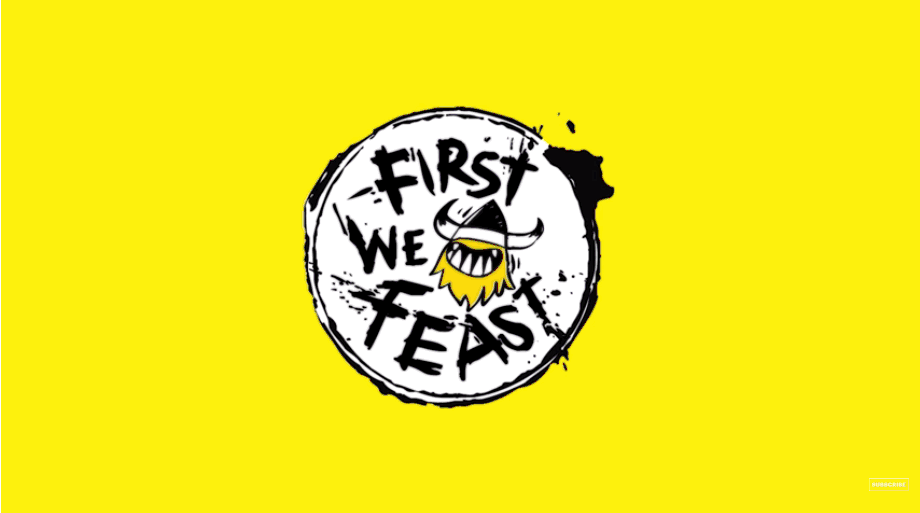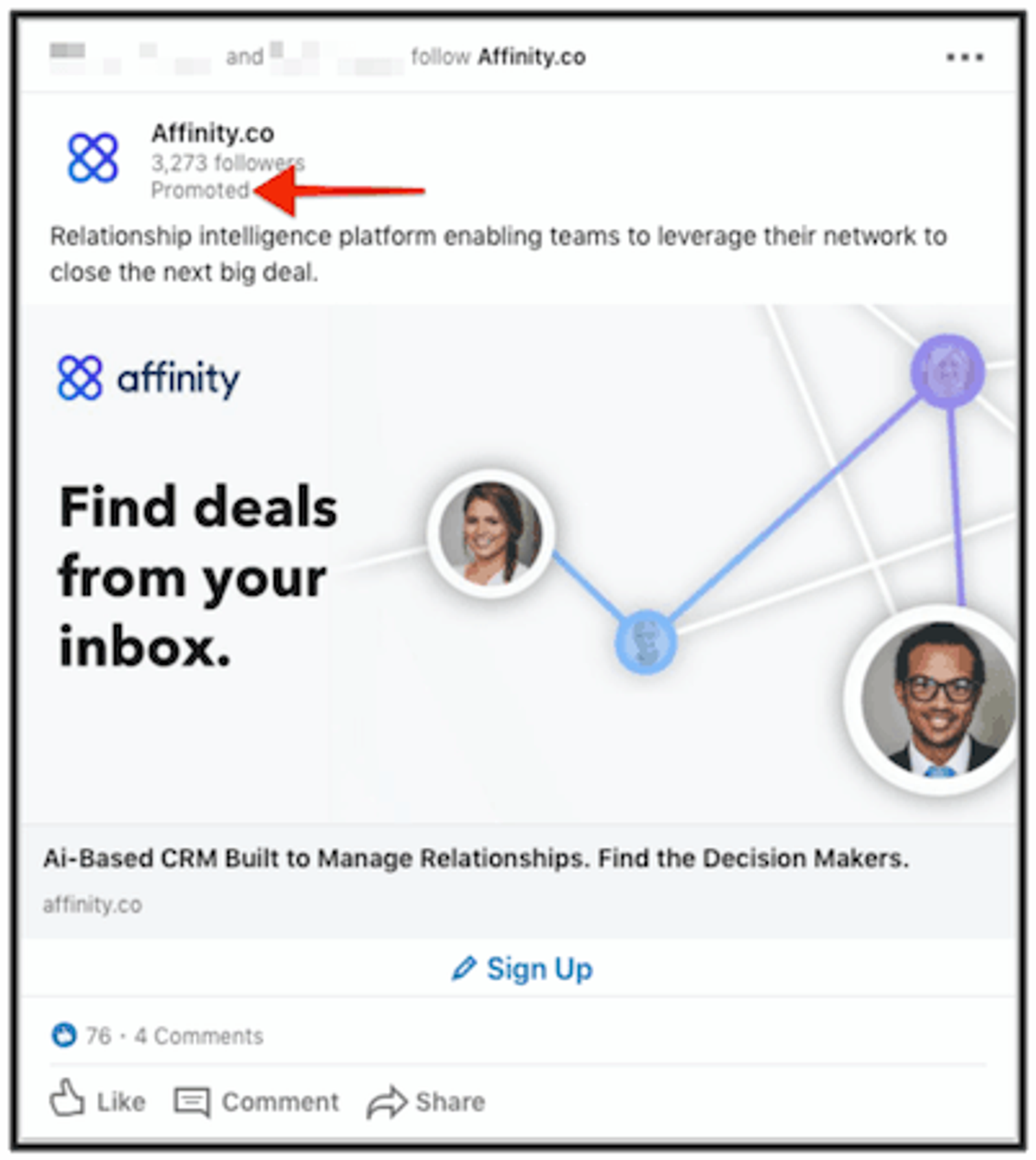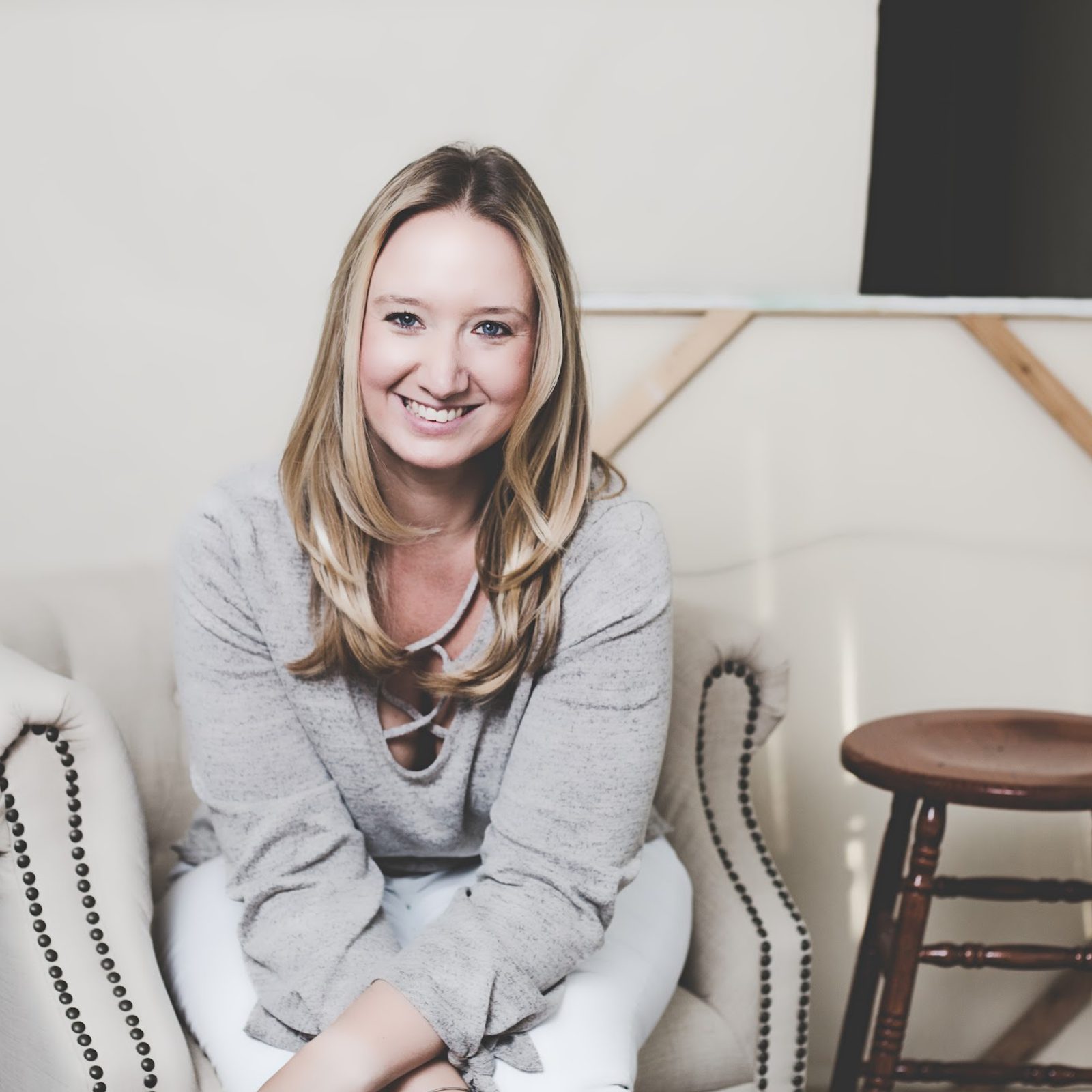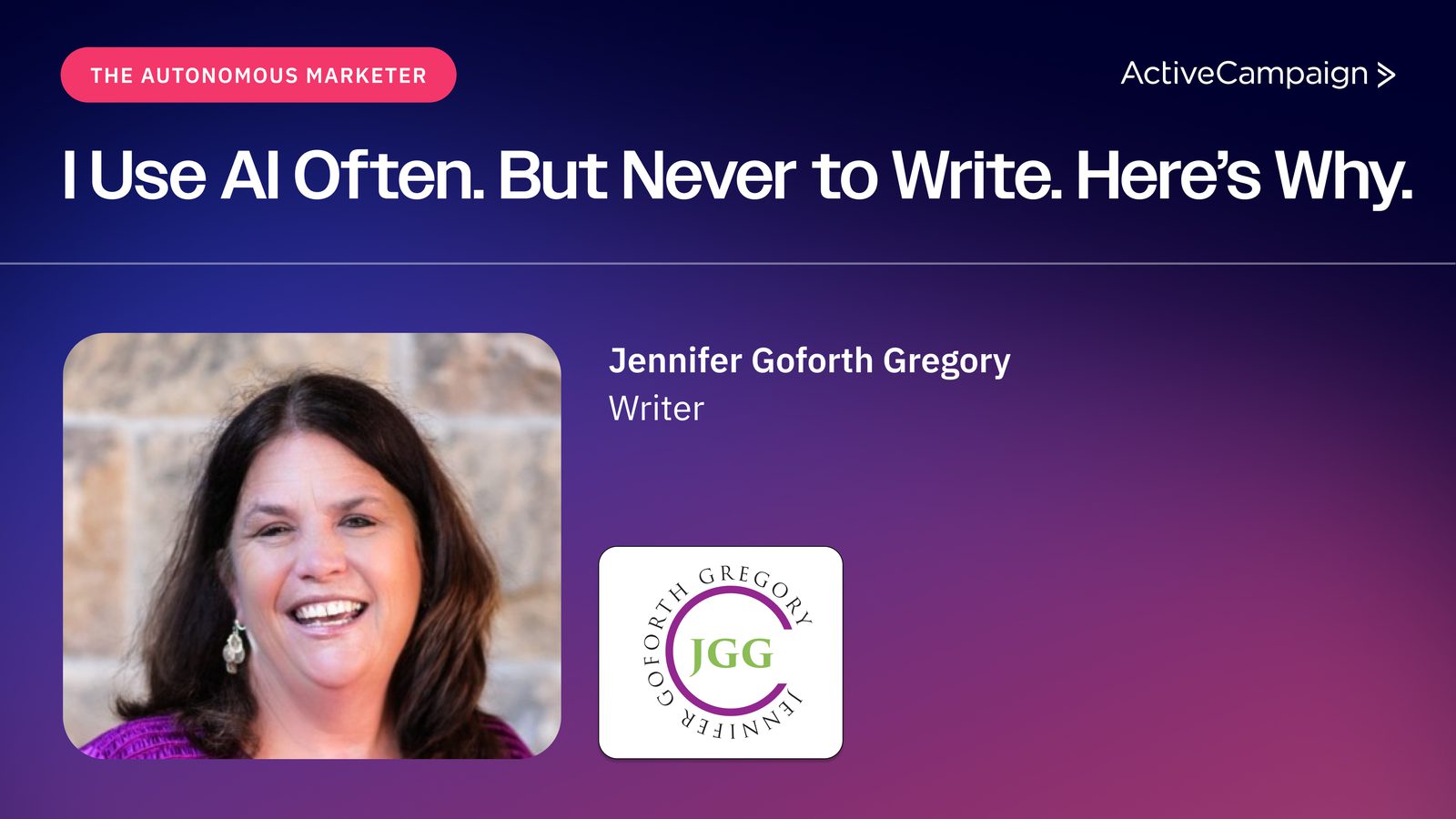“Paid post”
“Presented by”
“Sponsored by”
“Partnered with”
“Promoted”
“Affiliated with”
“Powered by"
Look familiar? These phrases are indicators of sponsored content. They mean that a brand has spent some money to get some content in front of you. And guess what?
Sponsored content works!
Sponsored content gets your company in front of people in places that they’re already looking. Because it holds useful information and feels appropriate for the context, it’s a persuasive way to tell people more about what you do.
Keep reading to learn:
- What is sponsored content?
- 3 aspects of sponsored content
- 9 examples of sponsored content
What is sponsored content?
Sponsored content is premium content that a sponsor pays a publisher to create and distribute. It’s a type of native advertising that is consistent with the surrounding content on a webpage.
In other words, sponsored content is an ad that looks like it’s supposed to be there – it feels like a natural fit for a platform, instead of an invasive advertisement.
Why is sponsored content a popular form of marketing?
- Sponsored content makes your brand feel credible and trustworthy by placing it alongside other things that the viewer enjoys
- Sponsored content adds to the user experience instead of disrupting it
- Building on the previous – paid media is often interruptive. Sponsored content is one of the few ways to pay for exposure without interrupting people
- Sponsored content isn’t restricted to 1 format or type of media
- Sponsored content is mutually beneficial – a content creator (with an audience) gets funding and a product creator (who needs an audience to get customers) gets an audience
At its core, sponsored content is simple: Two brands form a sponsored content partnership – the advertiser pays for the content, and another brand, social media influencer, or publisher shares it.
In fact, sponsored content is so simple that it’s been around for over 100 years.
And it started with soap operas.
In the 1920s, radio was king. Radio stations created serial programs that told stories like today’s true-crime podcasts. Then, as now, producing content could be expensive – so radio stations approached household goods manufacturers for sponsorships.
Procter & Gamble was the first to agree and began marketing their soap laundry detergent, Oxydol, on the radio. As the shows became a hit, they became associated with the advertisers who sponsored each episode – and, as a result, got the name “soap operas.”
Today, sponsored content exists across dozens of channels in various forms. Social media, podcasts, articles, television spots, and (of course) good ol’ radio are popular choices for modern sponsored content.
Try it now, for free
3 things you need to know about sponsored content
Sponsored content is always evolving with the digital landscape. As new ways for us to consume content emerge, you can bet that sponsored content will follow.
Because it’s ever-changing, many sponsored content definitions aren’t complete or comprehensive. When defining sponsored content, there are 3 aspects you need to consider:
- What is the difference between sponsored content and native advertising?
- The content formats of sponsored content
- Sponsored content looks like other content in the feed
1. What is the difference between sponsored content and native advertising?
The difference between sponsored content and native advertising is that sponsored content is a type of native advertising specific to a sponsored partnership between two brands. The difference is similar to the saying “All squares are rectangles but not all rectangles are squares”.
All sponsored content is native advertising, but not all native advertising is sponsored content.
The difference is that sponsored content is just that – content. It’s a video or photo or article that looks like any other video, photo, or article on the page.
What is native advertising?
According to the Native Advertising Institute, “Native advertising is paid advertising where the ad matches the form, feel and function of the content of the media on which it appears.”
Neither native ads nor sponsored content is disruptive. Both native ads and sponsored content look natural on a web page.
This is (mostly) true for all native advertising, and the Interactive Advertising Bureau (IAB) defines native advertising as,
“paid ads that are so cohesive with the page content assimilated into the design, and consistent with the platform behavior that the viewer simply feels that they belong.”
According to the IAB, there are 6 types of native advertising:
- In-feed ads → (sponsored content)
- Paid search ads
- Content recommendation widgets
- Promoted listings
- In-ad with native element units
- Custom ads
Most native ads consist of:
- Headline
- Short description or snippet of copy
- Photo
- Matching fonts, colors, and themes of the website

Sponsored content lies somewhere in the space between branded content and native advertising. It shares pieces of both but is its own thing. (Source)
2. The content formats of sponsored content
Any type of content you can think of can be sponsored content because sponsored content isn’t restricted to any format or style. The only thing separating content from sponsored content is the sponsorship!
Sponsored content includes:
- Articles
- Listicles
- Videos
- Photos
- Infographics
- Sponsored Tweets (Twitter)
- Sponsored Pins (Pinterest)
- Carousel Ads
- Instagram TV Episodes
- Snapchat stories
- Facebook stories
- YouTube videos
- Podcast episodes or series
- And more!
As you can see from this list, social media-sponsored content is common. Each social media platform presents a new form or type of content. Each social platform has massive audiences of daily users. This makes the social feed a natural fit for sponsored posts.
A 2018 study by Content Marketing Institute shows:
- Social media topped the list of paid methods B2C marketers use to distribute content
- Of the 68% of respondents who use paid methods, three out of four (77%) use sponsored content on social media
- 33% of respondents used sponsored content on websites other than their own
Native advertising is on the rise, with sponsored content and social spending expanding rapidly (Source)
3. Sponsored content looks like other content in the feed
You’re much more likely to survive a plane crash than you are to click a banner ad. Display ads, banner ads, full-page ads, and even promoted listings don’t perform very well anymore.
But studies from 2018 show that people don’t hate all ads, they just hate intrusive ads. Sponsored content offers a solution to this by putting ads in places where people are already looking.
On a Facebook or LinkedIn timeline, a sponsored post looks like any other user’s status update or photo upload above or below the sponsored post. The display of sponsored content within the normal content draws attention away from the sponsor and directs it to the actual post.
The content is consistent with the page and the reader’s guard is down. Their first impression of the content is natural and the skepticism they feel toward traditional advertising is avoided, exposing the brand to a new audience.
New audience exposure drives:
- Brand awareness
- Relevance
- Trust
- Traffic
- Leads
- Conversions
- Customers
Sponsored content resembles editorial content (non-advertising-based content). They look so similar that in 2015 Contently found that consumers couldn't tell the difference between the two.
This presented a tricky situation. Consumers should know when they’re looking at an ad. But brands should also be able to create engaging sponsored content. The Federal Trade Commission (FTC) stepped in to provide some assistance.
The FTC still hasn’t figured out exactly how to regulate sponsored content. Instead, they state that:
- Influencers and brands must clearly state when they have a “material connection” to a brand.
What does “clearly state” mean?
It means brands have to disclose when a post is sponsored. The FTC requires disclosures to be:
- In clear and unambiguous language
- As close as possible to the ads
- In a font and color that’s easy to read and stands out from the background
- On-screen long enough to be read and understood (in video content)
- Read at a speed that’s easy to follow and understand (in audio content)
Because of this mandate, many influencers, key opinion leaders (KOLs), and brands on social media platforms now use a hashtag to avoid regulatory issues.
Hashtags like:
- #ad
- #sponsored
- #partner
9 examples of sponsored content
If you're thinking about creating sponsored content, what are your options? What have other companies tried before you? How does your content need to change depending on which platform you post it to?
Below are 9 different examples of sponsored content:
- Hot Ones & TUMS (YouTube)
- NowThis & BlackRock (NowThis)
- BuzzFeed & Hot Wheels (BuzzFeed)
- Taco Bell (Snapchat filter)
- Vanguard & Shopify (Podcast)
- Moonmountainman & liveagreatstory (Instagram post)
- UEFA Champions League & Heineken (Instagram story)
- Affinity.co (LinkedIn)
- UPS (Facebook)
1. Hot Ones & TUMS (YouTube)

TUMS sponsored the 9th season of YouTube show, “Hot Ones”
Hot Ones, the wildly spicy and popular hot wings interview show, is available on YouTube. They formed a partnership with TUMS for their 9th season. The partnership is both comical and appropriate, as the show centers around spicy food that require an antacid.
YouTube-sponsored content comes in a few flavors:
- Pre-video adroll
- In-video “presented by” or “sponsored by” segments (as shown above)
- In-video adroll
This sponsored content is relevant to the rest of the video and the intro “clearly states” the sponsorship. The show is preceded by a TUMS pre-video ad and also features TUMS when the guests have a particularly hard time with a hot wing.
2. NowThis & BlackRock (NowThis)

NowThis partnered with global investment management corporation BlackRock and released a sponsored video series about financial well-being
Popular news site NowThis and investment firm BlackRock got together to produce the video series, Invest in Yourself. The sponsorship from BlackRock makes sense because the video series is consistent with their investing and financial security business.
The sponsorship doesn’t impact the content in any way other than the “Sponsored” tag on the webpage and in each video. The video series lies in the intersection between NowThis and BlackRock, which makes the sponsored content relevant and effective.
3. BuzzFeed & Hot Wheels (BuzzFeed)

Children’s toy company Hot Wheels sponsored a post on BuzzFeed regarding children’s playtime
BuzzFeed-sponsored content takes the form of sponsored articles or listicles. They clearly state that the post is paid and indicate who the sponsor is. The sponsored BuzzFeed posts are always relevant to the brand that’s featured.
BuzzFeed-sponsored content is a great example of how brands can use this form of advertising to increase awareness, trust, and relevance. BuzzFeed creates an opportunity with its style of content and a topic, then pairs it with a brand that is an authority on that topic.
4. Taco Bell (Snapchat filter)

Taco Bell sponsored a Snapchat filter for Cinco de Mayo and was viewed 224 million times! (Image via NY Daily News)
Snapchat, the popular image/video sharing platform, has a “filter” feature where a user alters their face or surroundings for a given photo or video.
This Taco Bell filter was viewed over 224 million times(!!!). When done well, sponsored content like the taco-face filter adds to the user experience rather than interrupting it (like traditional advertising).
Snapchat-sponsored content comes in two formats:
- Sponsored Snapchat filters (seen above): are filters placed on the user’s camera or face to promote a service
- Sponsored Snapchat stories: sponsored content spliced in between other users’ stories to promote a brand or product
5. Vanguard & Shopify (podcast)

Shopify sponsors the Vanguard by Shopify Studios weekly podcast.
The podcast industry continues to grow in popularity. Monthly listenership is up to 32% of Americans, a huge market to tap into. Dynamic ads and sponsored content now make up 48.8% of the podcast ad business.
Podcast sponsorship is a great way for brands to increase awareness and relevance by sponsoring a program that’s related to their business.
In the Vanguard & Shopify example, the show highlights how subcultures and communities make money today. Shopify empowers small businesses to make money, and the fit is perfect!
6. Moonmountainman & liveagreatstory (Instagram post)

Jacob Moon (photographer, traveler) teamed up with Live A Great Story for this sponsored Instagram post
The hashtag “#LIVEpartner” indicates that this post is sponsored. Both Jacob (@moonmountainman on Instagram) and @liveagreatstory focus on the idea of life as a journey. Their common values make them perfect partners.
Instagram-sponsored content, similar to other social media platforms, comes in a few formats:
- Sponsored Instagram posts (pictured above): a brand teams up with an influencer or account for a singular post on the influencer’s Instagram profile. Their product or brand appears in the post and usually in the caption.
- Sponsored Instagram story: Instagram stories are photos or videos that only appear for 24 hours before disappearing. The stories play one after another and brands can sponsor ads that are spliced into the mix.
- Sponsored Instagram ads: Like sponsored posts, these ads appear in your feed. The difference is that the ads are inserted into your feed even though you don’t follow the user or brand. Sponsored posts appear in your feed because you follow the user.
This sponsored Instagram post is consistent with the content that Jacob creates, and doesn’t detract from the user’s experience as they scroll through their Instagram feed. It creates brand awareness for Live A Great Story and gives them instant credibility from fans of Jacob’s.
7. UEFA Champions League & Heineken (Instagram story)

This sponsored Instagram story features the return of the UEFA Champions League partnered with Heineken
Heineken took advantage of the UEFA Champions League return with this sponsored Instagram story. The ability to target users who follow European football presents an opportunity to promote Heineken as the go-to beverage for UCL viewing.
The sponsored story isn’t a pop-up or an invasive ad. The content only appears in between other Instagram stories that a user launches themselves. This way the sponsored content appears naturally in the feed and doesn’t interfere with using the app!
8. Affinity.co (LinkedIn)

LinkedIn-sponsored content like this ad for Affinity.co appears in your newsfeed as any other content would.
LinkedIn-sponsored content, along with BuzzFeed-sponsored content, is perhaps the most seamless format for sponsored content. Unlike other social media platforms, LinkedIn is designed for businesses, rather than recreational use.
The professional focus of LinkedIn’s feed makes it nearly impossible to discern a user-generated post from a sponsored post at first glance. The posts appear the same, function the same, and are consumed the same as any other piece of content on the site.
LinkedIn-sponsored content directs you to the promoted business’s profile and won’t take you away from the greater LinkedIn site right away.
9. UPS (Facebook)

UPS-sponsored content on Facebook looks similar to any other Facebook post in the feed
Facebook-sponsored content is similar to Instagram and LinkedIn-sponsored content. It matches the style and function of other content on the site. It doesn’t interrupt your site experience, as it’s spliced in with content from other pages that you follow.
Conclusion: Sponsored content improves brand lift
Sponsored content places brands in front of consumers in non-invasive ways. This expands the brand’s reach, builds trust, and improves credibility.
How?
People prefer familiar things. This is the mere-exposure effect. Sponsored content makes brands and products familiar and helps us develop a preference for them.
People also have shows they like to watch, social media platforms they favor, and hobbies they follow. When we experience sponsored content within things we already enjoy, we associate that brand with the things we like! This form of confirmation bias improves brand lift.
Sponsored content is a versatile and powerful tool for brands to take advantage of. When it’s effective, sponsored content is a game-changer.








